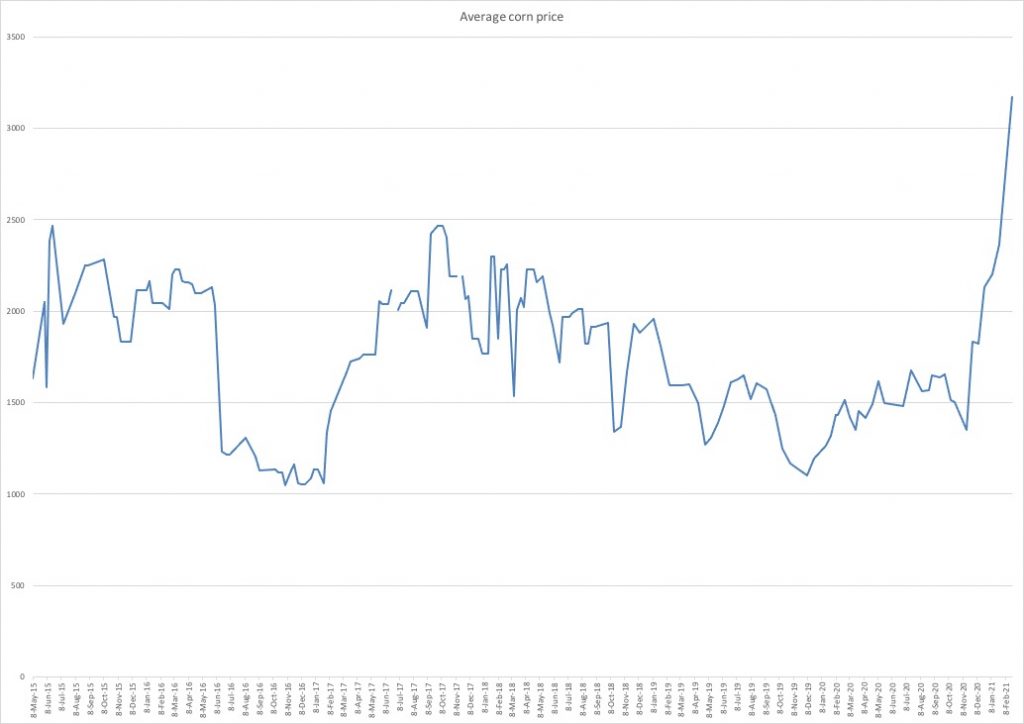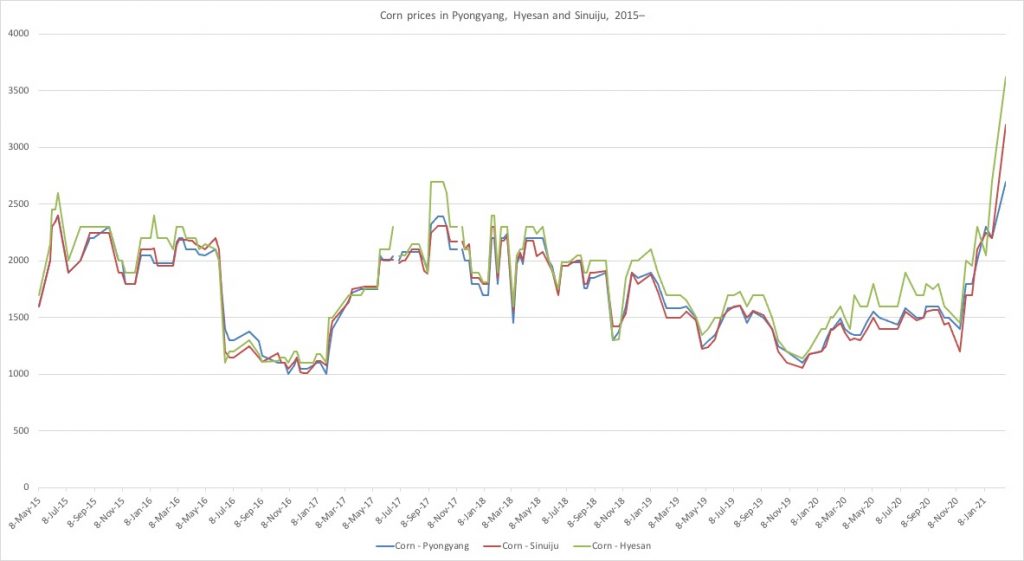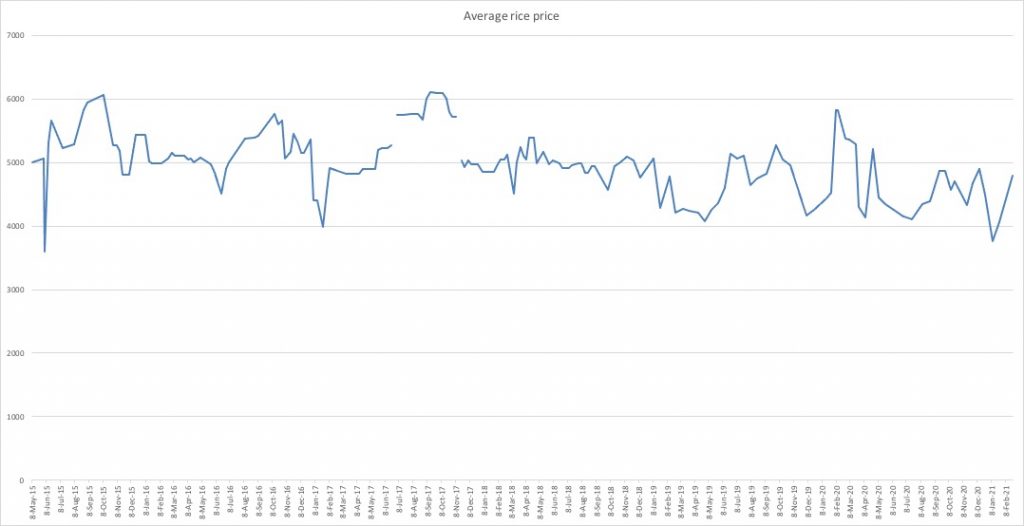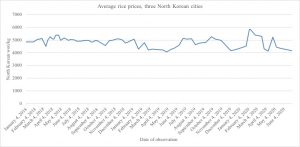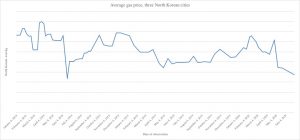By: Benjamin Katzeff Silberstein
Media outlets with sources inside North Korea, such as Daily NK, have reported for some weeks that trade might be restarting between China and North Korea. Daily NK reported in February that the USD-KRW rate began to climb after the 8th Party Congress amid rumors of the border opening again. Now, Nikkei Asia reports, based on anonymous sources in the Chinese border region, that preparations are being made to restart trade:
“I heard that North Korea is planning to accept Chinese goods from mid-April,” a Chinese man in his 30s at a trading company in Dandong, a city across the Yalu River from North Korea, told Nikkei. He said the information came from the North Korean side and he was preparing to restart his business.
A number of other trading companies also confirmed that bilateral trade is expected to resume in April.
At first, goods will only travel between Dandong and Sinuiju in North Korea, by rail over the Sino-Korean Friendship Bridge, which is the main route of trade between the two countries.
In Sinuiju, COVID-19 testing sites are being prepared. All being well, transport by ship and trucks will also be resumed.
North Korea needs medicines to treat diabetes, infections and other diseases, said a person familiar with the matter. “Bilateral trade” is in fact Chinese aid to North Korea, the source said. Sources also say that North Korea is asking for chemical fertilizers as the spring seeding season approaches.
In late January 2020, North Korea suspended flight and rail services from China and Russia to prevent coronavirus contagion. Overseas visitors were banned and goods restricted.
Pyongyang partially eased transport restrictions in May last year but reimposed them in October due to another wave of infections in China. Trade by road, rail and sea have almost entirely been suspended.
Meanwhile, a new bridge over the Yalu River is about to open. On March 9, the provincial government of Liaoning in China announced invitations for the tender of safety inspections for the New Yalu River Bridge, saying in those documents that the crossing would soon be open.
(Full article and source: Shin Watanabe and Tsukasa Hadano, “China and North Korea to revive trade in April amid US tension,” Nikkei Asia, March 30th, 2021.)

